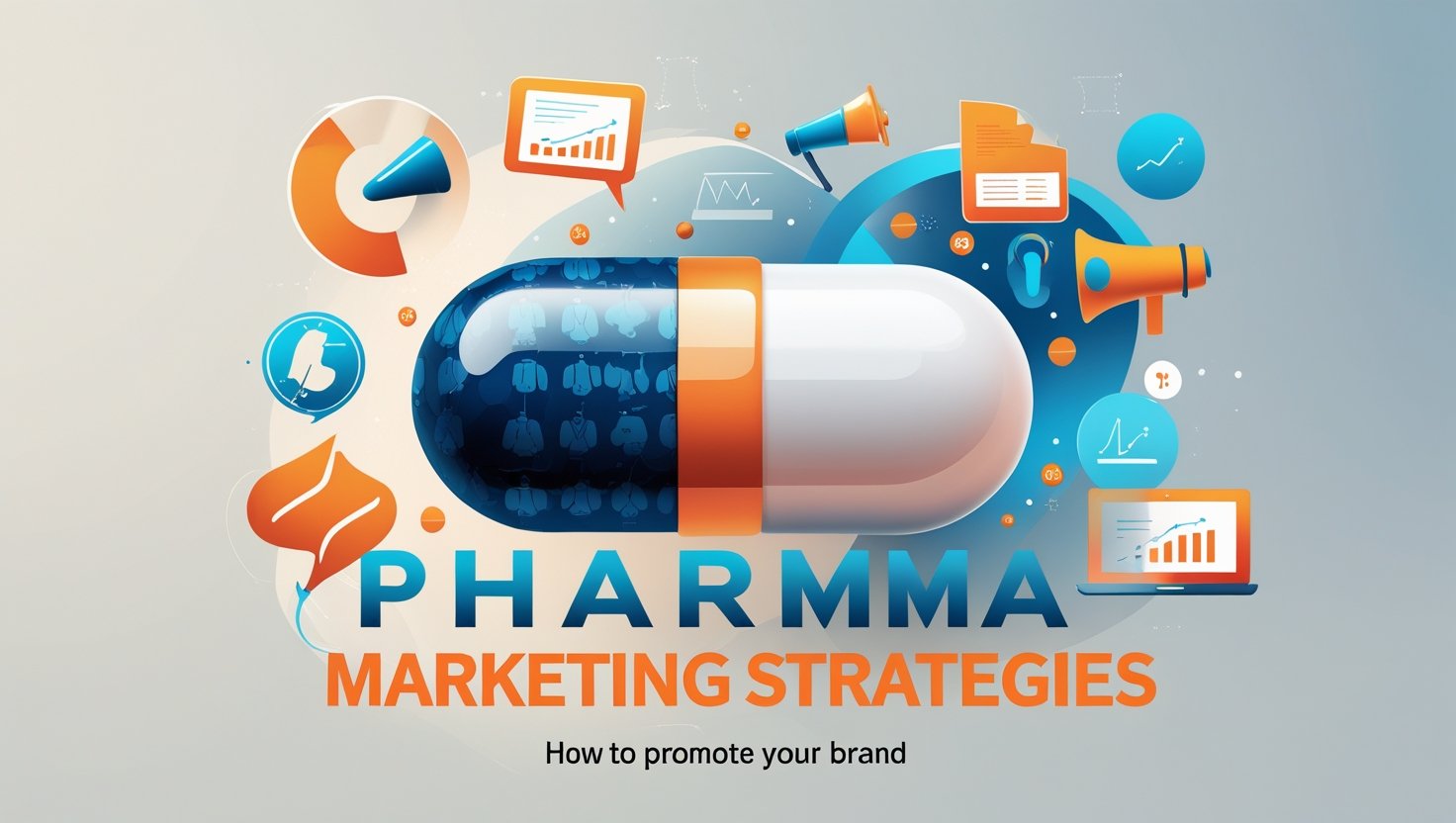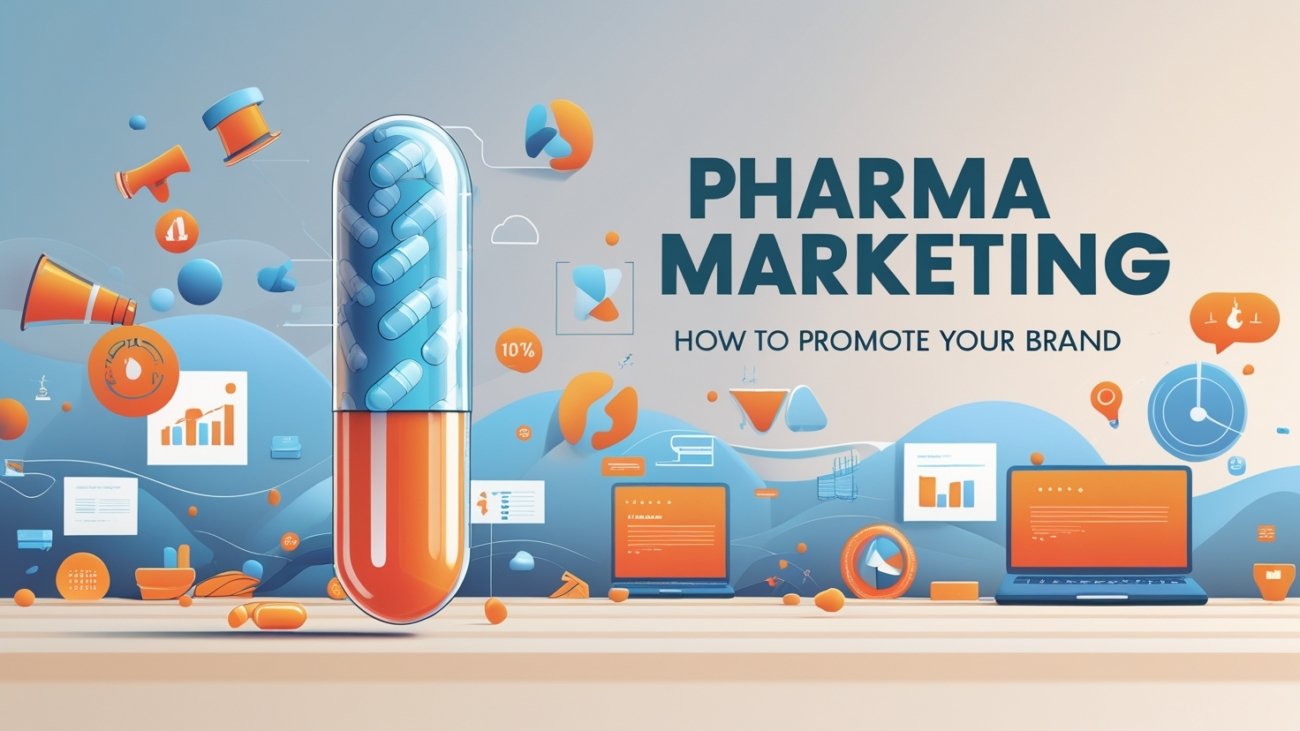
In the highly regulated and competitive pharmaceutical industry, effective marketing strategies are essential to stand out, build trust, and ensure your medicines reach those who need them.
Promoting a pharmaceutical brand requires creativity, compliance with strict regulations, and a deep understanding of your audience — healthcare providers, patients, and stakeholders.
Why Pharma Marketing Matters
Pharmaceutical marketing goes beyond selling medicines; it’s about educating, building trust, and improving health outcomes.
Effective strategies:
– Increase Awareness: Ensure healthcare professionals (HCPs) and patients know about your products.
– Drive Adoption: Encourage prescribing and usage through trust and education.
– Ensure Compliance: Adhere to regulations like the FDA’s or EMA’s guidelines.
– Foster Loyalty: Build long-term relationships with HCPs, pharmacies, and patients.
Let’s explore creative, engaging, and actionable strategies to promote your pharma brand effectively.
Step 1: Know Your Audience and Tailor Your Approach
Understanding your audience is the foundation of any successful marketing campaign.
In pharma, your audience includes HCPs (doctors, pharmacists), patients, and sometimes payers (insurance companies).
Actionable Tips:
– Segment Your Audience: Create personas for HCPs (e.g., specialists vs. general practitioners) and patients (e.g., chronic illness vs. acute care). Use data analytics to identify their needs and preferences.
– Personalized Messaging: Tailor content to each segment. For HCPs, focus on clinical data and efficacy; for patients, emphasize benefits and ease of use.
– Interactive Tool: Develop a Persona Builder Quiz to help your team create targeted campaigns.
Step 2: Leverage Digital and Social Media Platforms
Digital channels offer unparalleled opportunities to reach HCPs and patients, especially on platforms like X, where real-time engagement is possible.
Strategies:
– Educational Content on X: Share infographics, short videos, or patient stories about your medicines.
Use hashtags like Pharma Innovation or Health For All to increase visibility.
– Webinars and Live Q&As: Host virtual sessions with HCPs to discuss your medicine’s benefits, side effects, and clinical trial data.
Record these for on-demand access.
– Patient Support Apps: Create apps that help patients track medication schedules, access educational resources, or connect with support groups.
Creative Idea:
Launch a Health Heroes Campaign on X, spotlighting HCPs and patients who use your medicines to improve lives.
Encourage user-generated content with a branded hashtag to foster community engagement.
Step 3: Focus on Educational Marketing
Education is the cornerstone of pharma marketing, as trust and credibility are paramount.
Tactics:
– HCP Training Modules: Develop interactive e-learning modules for doctors and pharmacists, covering your medicine’s mechanism, dosage, and patient outcomes.
– Patient Education Materials: Create downloadable guides or animated videos explaining how to use your medicines correctly. Ensure materials are accessible in multiple languages.
– Interactive Infographic: Design a clickable infographic to explain your medicine’s benefits.
Step 4: Build Trust Through Transparency
Pharma brands must prioritize transparency to combat skepticism and build loyalty.
Strategies:
– Clinical Trial Transparency: Share summaries of clinical trial results on your website and X, written in layman’s terms for patients.
– Patient Testimonials: With consent, share real patient stories to humanize your brand. Use video testimonials for greater impact.
– Compliance Assurance: Clearly communicate your adherence to regulations like the FDA’s or EMA’s guidelines in all marketing materials.
Innovative Idea:
Create a Transparency Portal on your website where patients and HCPs can access detailed information about your medicines, including trial data, manufacturing processes, and regulatory approvals.
Step 5: Partner with Stakeholders
Collaborations amplify your reach and credibility.
Key Partnerships:
– HCP Influencers: Work with respected doctors or pharmacists to endorse your brand in compliance with regulations.
– Patient Advocacy Groups: Partner with organizations to co-create campaigns that resonate with specific patient communities.
– Pharmacies: Offer co-branded marketing materials to pharmacies to promote your medicines at the point of sale.
Creative Twist:
Host a Pharma Innovation Hackathon, inviting HCPs, patients, and tech experts to brainstorm marketing ideas.
Reward winning ideas with grants or pilot programs.
Step 6: Measure and Optimize Your Campaigns
Continuous evaluation ensures your strategies remain effective.
Metrics to Track:
– Engagement Metrics: Likes, shares, and comments on X posts or webinar attendance.
– Conversion Metrics: Prescription rates, website visits, or app downloads.
– Feedback Loops: Use surveys or X polls to gather insights from HCPs and patients.
Challenges and Solutions
– Challenge: Strict regulations limiting promotional claims.
— Solution: Focus on educational content and avoid unverified claims.
– Challenge: Patient skepticism about pharma brands.
— Solution: Use transparent communication and patient-centric campaigns.
– Challenge: High competition in the market.
— Solution: Differentiate with unique digital tools and partnerships.
Conclusion
Promoting a pharmaceutical brand requires a blend of creativity, compliance, and empathy.
By leveraging digital platforms, prioritizing education, and fostering transparency, you can build trust and drive adoption.
Use the interactive tools and strategies outlined here to create campaigns that resonate with HCPs and patients alike.
Start with small, targeted efforts, measure their impact, and scale with confidence to make a meaningful difference in healthcare.

